雄诺龙
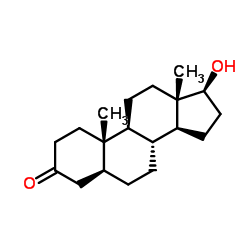
雄诺龙结构式

|
常用名 | 雄诺龙 | 英文名 | Stanolone |
|---|---|---|---|---|
| CAS号 | 521-18-6 | 分子量 | 290.440 | |
| 密度 | 1.1±0.1 g/cm3 | 沸点 | 413.1±38.0 °C at 760 mmHg | |
| 分子式 | C19H30O2 | 熔点 | 178-183 °C | |
| MSDS | 中文版 美版 | 闪点 | 176.4±19.4 °C | |
| 符号 |



GHS02, GHS06, GHS08 |
信号词 | Danger |
雄诺龙用途雄激素类药 |
| 中文名 | 5α-二氢睾酮 |
|---|---|
| 英文名 | 17β-hydroxy-5α-androstan-3-one |
| 中文别名 | 雄诺龙 |
| 英文别名 | 更多 |
| 密度 | 1.1±0.1 g/cm3 |
|---|---|
| 沸点 | 413.1±38.0 °C at 760 mmHg |
| 熔点 | 178-183 °C |
| 分子式 | C19H30O2 |
| 分子量 | 290.440 |
| 闪点 | 176.4±19.4 °C |
| 精确质量 | 290.224579 |
| PSA | 37.30000 |
| LogP | 3.75 |
| 蒸汽压 | 0.0±2.2 mmHg at 25°C |
| 折射率 | 1.536 |
| 储存条件 | 本品应密封于阴凉干燥处保存。 |
| 稳定性 | 按规格使用和贮存,不会发生分解,避免与氧化物接触 |
| 分子结构 | 1、 摩尔折射率:83.49 2、 摩尔体积(m3/mol):267.6 3、 等张比容(90.2K):677.7 4、 表面张力(dyne/cm):41.1 5、 极化率(10-24cm3):33.10 |
| 计算化学 | 1、 疏水参数计算参考值(XlogP):3.7 2、 氢键供体数量:1 3、 氢键受体数量:2 4、 可旋转化学键数量:0 5、 互变异构体数量:3 6、 拓扑分子极性表面积(TPSA):37.3 7、 重原子数量:21 8、 表面电荷:0 9、 复杂度:459 10、 同位素原子数量:0 11、 确定原子立构中心数量:7 12、 不确定原子立构中心数量:0 13、 确定化学键立构中心数量:0 14、 不确定化学键立构中心数量:0 15、 共价键单元数量:1 |
| 更多 | 1. 性状:结晶。一种促蛋白质合成的甾类化合物。 2. 密度(g/mL,25/4℃): 未确定 3. 相对蒸汽密度(g/mL,空气=1):未确定 4. 熔点(ºC):181 5. 沸点(ºC,常压):未确定 6. 沸点(ºC,5.2kPa):未确定 7. 折射率:未确定 8. 闪点(ºC):未确定 9. 比旋光度(º):-32.4°(乙醇中) 10. 自燃点或引燃温度(ºC):未确定 11. 蒸气压(kPa,25ºC):未确定 12. 饱和蒸气压(kPa,60ºC):未确定 13. 燃烧热(KJ/mol):未确定 14. 临界温度(ºC):未确定 15. 临界压力(KPa):未确定 16. 油水(辛醇/水)分配系数的对数值:未确定 17. 爆炸上限(%,V/V):未确定 18. 爆炸下限(%,V/V):未确定 19. 溶解性:溶于丙酮、乙醚、乙醇、乙酸乙酯,几乎不溶于水。 |
| 符号 |



GHS02, GHS06, GHS08 |
|---|---|
| 信号词 | Danger |
| 危害声明 | H225-H301 + H311 + H331-H370 |
| 警示性声明 | P210-P280-P302 + P352 + P312-P304 + P340 + P312-P370 + P378-P403 + P235 |
| 个人防护装备 | Eyeshields;full-face particle respirator type N100 (US);Gloves;respirator cartridge type N100 (US);type P1 (EN143) respirator filter;type P3 (EN 143) respirator cartridges |
| 危害码 (欧洲) | Xn |
| 风险声明 (欧洲) | R61 |
| 安全声明 (欧洲) | S53-S36/37/39-S45 |
| 危险品运输编码 | UN1230 - class 3 - PG 2 - Methanol, solution |
| WGK德国 | 3 |
| RTECS号 | BV8052000 |
| 包装等级 | II |
| 危险类别 | 6.1 |
| 雄诺龙上游产品 8 | |
|---|---|
| 雄诺龙下游产品 10 | |
|
Genetic and pharmacologic inhibition of eIF4E reduces breast cancer cell migration, invasion, and metastasis.
Cancer Res. 75(6) , 1102-12, (2015) The translation initiation factor eIF4E is an oncogene that is commonly overexpressed in primary breast cancers and metastases. In this article, we report that a pharmacologic inhibitor of eIF4E funct... |
|
|
Aptamer-based polyvalent ligands for regulated cell attachment on the hydrogel surface.
Biomacromolecules 16(4) , 1382-9, (2015) Natural biomolecules are often used to functionalize materials to achieve desired cell-material interactions. However, their applications can be limited owing to denaturation during the material funct... |
|
|
Co-ordinated brain and craniofacial development depend upon Patched1/XIAP regulation of cell survival.
Hum. Mol. Genet. 24(3) , 698-713, (2015) Congenital brain and craniofacial defects often occur together as a consequence of their developmental dependency on common progenitor tissue interactions and signaling pathways during embryogenesis. ... |
| Stanolone |
| EINECS 208-307-3 |
| Anaboleen |
| 17β-Hydroxy-5α-androstane-3-one |
| Androlone |
| dihydrotestosterone |
| Anabolex |
| (5a,17b)-17-Hydroxyandrostan-3-one |
| 5α-Dihydrotestosterone |
| Stanorone |
| 5α dihydrotestosterone |
| Androstanolone |
| DHT |
| [14C]-Dihydrotestosterone |
| Androstan-3-one, 17-hydroxy-, (5α,17β)- |
| 5α-Androstan-3-one, 17β-hydroxy- |
| [3H]-Dihydrotestosterone |
| 17beta-hydroxy-5alpha-androstan-3-one |
| Andractim |
| 17β-hydroxy-5α-androstan-3-one |
| Androstan-17b-ol-3-one |
| Stanaprol |
| 4-dihydrotestosterone |
| Neodrol |
| (5α,17β)-17-Hydroxyandrostan-3-one |
| 5a-Dihydrotestosterone |
| Protona |
| Stanolon |
| Anaprotin |
| MFCD00003667 |

 CAS号58701-44-3
CAS号58701-44-3![(5S,8R,9S,10S,13S,14S,17S)-10,13-dimethyl-17-((triethylsilyl)oxy)tetradecahydro-1H-cyclopenta[a]phenanthren-3(2H)-one结构式](https://image.chemsrc.com/caspic/212/361336-13-2.png) CAS号361336-13-2
CAS号361336-13-2 CAS号846-46-8
CAS号846-46-8 CAS号1046-35-1
CAS号1046-35-1![Androstan-3-one, 17-[(2-methoxyethoxy)methoxy]-, (17β)结构式](https://image.chemsrc.com/caspic/359/91475-95-5.png) CAS号91475-95-5
CAS号91475-95-5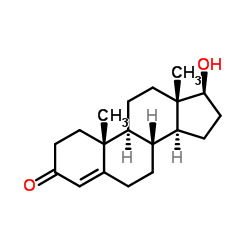 CAS号58-22-0
CAS号58-22-0![3,17β-bis-[2,3,5,6-tetrafluoro-4-(trifluoromethyl)phenoxy]-5α-androst-2-ene结构式](https://image.chemsrc.com/caspic/319/112251-17-9.png) CAS号112251-17-9
CAS号112251-17-9![(3R,5S,8R,9S,10S,13S,14S,17S)-17-hydroxy-10,13-dimethylhexadecahydro-1H-cyclopenta[a]phenanthren-3-yl (3,5-di-tert-butyl-4-oxocyclohexa-2,5-dien-1-ylidene)azinate结构式](https://image.chemsrc.com/caspic/241/75958-96-2.png) CAS号75958-96-2
CAS号75958-96-2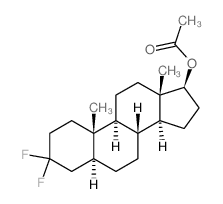 CAS号1827-75-4
CAS号1827-75-4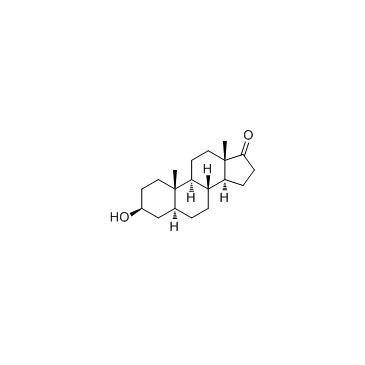 CAS号481-29-8
CAS号481-29-8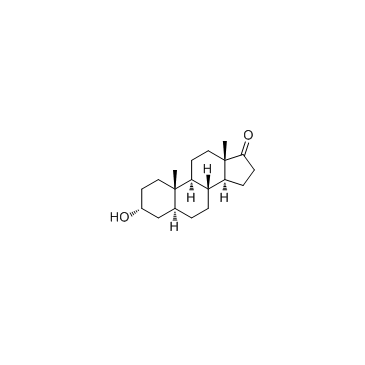 CAS号53-41-8
CAS号53-41-8 CAS号571-20-0
CAS号571-20-0![(3R,5S,8R,9S,10S,13S,14S,17S)-10,13-dimethylspiro[1,2,4,5,6,7,8,9,11,12,14,15,16,17-tetradecahydrocyclopenta[a]phenanthrene-3,2'-oxirane]-17-ol结构式](https://image.chemsrc.com/caspic/290/2384-24-9.png) CAS号2384-24-9
CAS号2384-24-9 CAS号1852-53-5
CAS号1852-53-5 CAS号571-40-4
CAS号571-40-4 CAS号27261-27-4
CAS号27261-27-4 CAS号121209-70-9
CAS号121209-70-9
